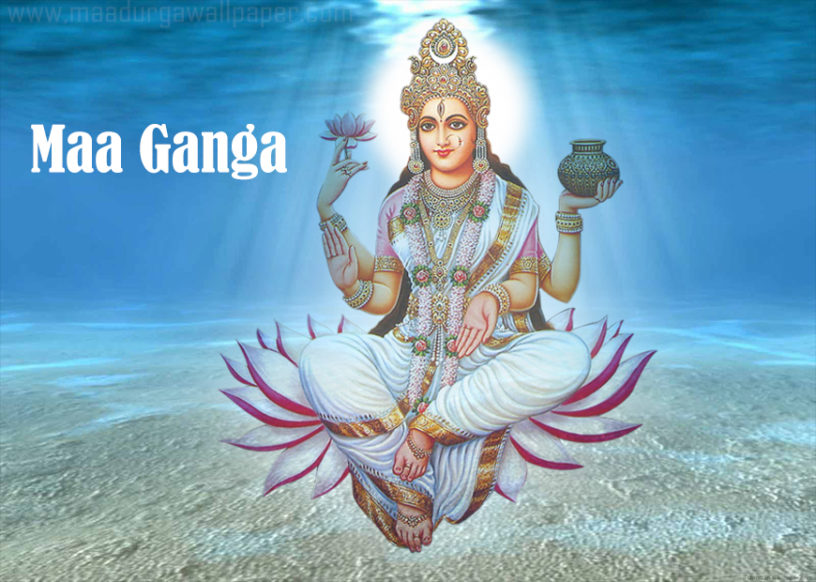Gangaa Dhaaraa or Gangaa Dashara is a ten-day festival dedicated to the worship of Gangaa Maa that culminates with Gangaa Dashami on May 23, 2018. In India this festival is observed in holy places such as Rishikesh, Haridwar, Prayag, and Varanasi amongst others. The Gangaa, or Ganges River, is bound with every important aspect of life in India. Almost one out of every ten people in the world lives within the area known as the Ganges basin. This blessed river sustains and also adds meaning to life. As Hindus, we have five debts to repay – one of which is to the environment. No life can exist without water. Through the worship of Gangaa Maa we are reminded of the immediate need to actively engage in the protection and preservation of our environment and its priceless natural resources.
From a mythological perspective, Gangaa is said to have originally flowed over the feet of Vishnu Bhagwan and Her divine potency was further intensified, having flowed through the hair of Shivaji. Gangaa Maa was entreated to descend to earth by Raja Bhagiratha, but she understood that the immensity of her flow would be too much for the earth. Instead of emerging directly onto the earth, she descended from the jataa (matted locks) of Lord Shiva. Hence, Gangaa Maa is known as Jataa-Dhari Gangaa, that is, the One who flows from Lord Shiva’s hair. For such reasons, Her waters are pavitra paavani, that is, possessing the innate ability to purify and sanctify whatever comes into contact with it. Taking a ritual bath in the Gangaa is said to purify the body internally and externally, washing away all accumulated sins, thereby facilitating the liberation of the soul.
Gangaa Maa, as a form of the Devi, is considered to be one of the mothers that are worthy of worship in Sanaatan Dharma. Throughout our scriptures there are numerous references to Her worship. In the Bhagavad Gita, Shree Krishna endorses such devotion stating, “I am the Gangaa among rivers”. In Raamaayan there is a beautiful incident where Seeta Maataa prayed to Gangaa for Shree Raam’s, Lakshman’s and her safe return to Ayodhya after their 14 years of exile while Shree Raam bowed to the blessed Gangaa after having worshipped a clay image of Shiva Bhagwaan. Even today, the worship of Gangaa and Shivaji are combined, with many performing Shiva puja on the banks of the river for Gangaa Dashami.
Our ancestors steadfastly worshipped Gangaa Maa. Nowadays, devotees gather at various watercourses, usually rivers, from early in the morning of this observance. Puja in the form of offerings of prasad, flowers, malas and jal are made to Gangaa Maa in the form of flowing water. Sometimes, with much advanced preparation, murtis of Gangaa Maa and Lord Shiva are installed temporarily in the water to add to the reverence of the occasion. Little boats made of coconut shells transport earthen deeyas across the waters, decorating Gangaa Maa with the lights of devotion. Devotees also engage in the recitation of the Gangaa and Shiva Chaleesa, perform Gangaa Aarti and even engage in Ganga Jaap. The day’s activities usually end with a ceremonial bath in the river which is given the significance of Gangaa Maa herself for that day.
From articles by Pt. Ishwar Madho Maharaj, Principal, Swaha Hindu College



